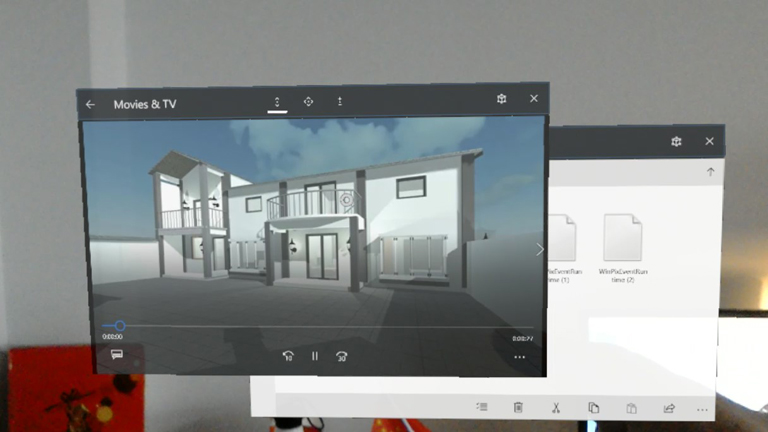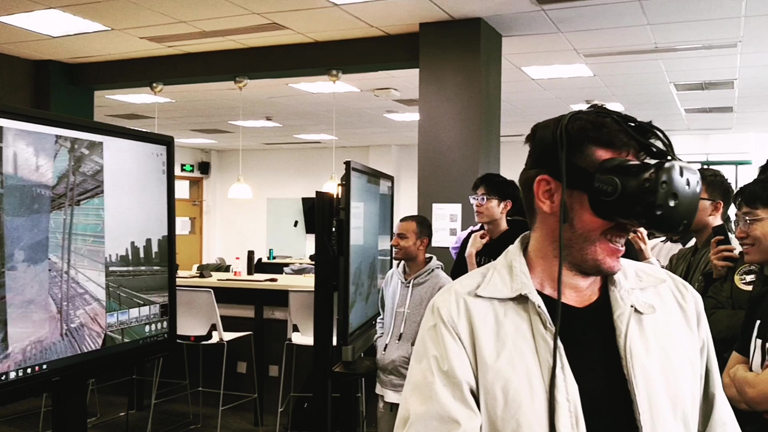Minecraft is a popular video game that allows players to build anything in the game world, from the simplest of homes to the greatest of castles. A research team at the University of Nottingham Ningbo China (UNNC) is working on bringing this immersive experience to architects and consumers in the real world.

House entrance shown in the "HoloLens" experience

Students wearing the "HoloLens" headset to experience architecture construction in a mixed-reality environment
Previous
Next
The team - composed of engineering staff and postgraduate students - won gold at the recent National Intelligent Construction Technology and Innovation Competition, with their project entitled “Architectural Design Intelligence based on Gamification”.
The project beat off nearly 150 competitors with its innovative solution to better enhance architect-consumer communication.
The project is the brainchild of the Building Information Modelling (BIM) scholar Dr Georgios Kapogiannis and PhD candidate Tianlun Yang. Being an architect himself, Tianlun constantly experienced the frustration of not being able to communicate with clients effectively enough to reach agreement on the perfect design.
Tianlun said: “The traditional design process has its limitations in keeping clients engaged. It requires professional knowledge to understand the plan drawing and to articulate ideas effectively.”
Tianlun turned to his supervisor, Dr Georgios Kapogiannis for advice. Together they proposed to “level the playing field” by creating an intuitive and interactive game-like environment for architectural design presentations.
The team designed 3D models from two-dimensional diagrams and used a “HoloLens” headset to create a mixed-reality environment where users could see vividly even decorative details. This visualisation alone created a dynamic experience, but the team decided to take the project to the next level by combining it with gaming technologies.
“To make it more interactive, I suggested gamification and Tianlun looked at me like I was crazy.” Dr Kapogiannis recalled with a laugh. “Gamification could make presentations more fun and allow greater creativity. So I thought why not experiment?”
With contributions from another UNNC postgraduate, Ryan Jonathan, the simulation was ready within two weeks and included all kinds of game-world interactions. Users could play with virtual furniture and alter the design by themselves, just as gamers do in Minecraft. The alterations can be recorded and shared instantly via Wechat, the major chat app in China.
Dr Kapogiannis commented that the project was currently at its preliminary stage. “The combination of gaming with architectural design opened up a broad array of possibilities for the industry," he said. “As our next step, we will work with supply chain research groups to discuss its applications to hospitals and ports.”
The winning project was based on real-world data provided by a local architectural design firm, Zhejiang Jingwei Engineering Design Ltd. and received guidance from UNNC’s Geospatial Engineering expert, Dr Craig Matthew Hancock.
Published on 17 January 2020